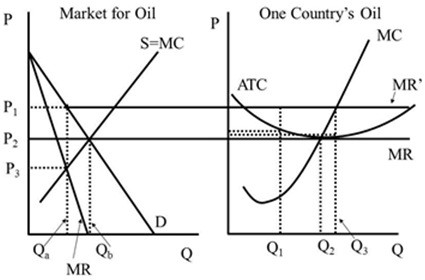Explain what is meant by an appreciation and depreciation of the dollar. What does it mean if the dollar price of a Swiss franc (SF) decreases from $0.80 = 1 SF to $0.70 = 1 SF? What does it mean if the dollar price of a Swiss franc increased from $0.70 = 1 SF to $0.80 = 1 SF?
What will be an ideal response?
When the dollar price of foreign currency decreases, there has been an appreciation in the value of the dollar. When the dollar price of foreign currency increases, there has been a depreciation in value of the dollar. If, for example, the dollar price of a Swiss franc (SF) decreases from $0.80 = 1 SF to $0.70 = 1 SF, then it means that there has been an appreciation in the value of the dollar; but if the dollar price of a Swiss franc increases from $0.70 = 1 SF to $0.80 = 1 SF, then it means that there has been a depreciation in the value of the dollar.
You might also like to view...
Under the cartel, the individual firm's economic profit is (assuming that it wants to cheat on its quota)  Figure 42.2
Figure 42.2
A. zero. B. the smaller of the dashed-line boxes. C. between the size of the two dashed-line boxes. D. the larger of the dashed-line boxes.
In November 2008, the Fed began its first round of quantitative easing. In total, the Fed conducted ________ rounds of quantitative easing before ending the program in October 2014
A) 2 B) 3 C) 4 D) 5
For complementary goods, an increase in the price of one shifts the demand curve for the other to the right
Indicate whether the statement is true or false
Which of the following does not increase (i.e., shift) the supply curve of real loanable funds?
a. Open market purchases of government securities by the central bank. b. A decrease in the discount rate. c. A decrease in the reserve ratio by the central bank. d. A decrease in the preferred asset ratio for near money (N/D), due to a shift in household preferences. e. All of the above increase the supply.